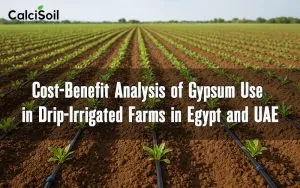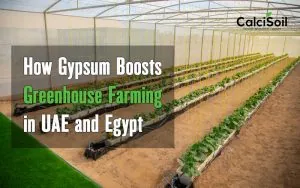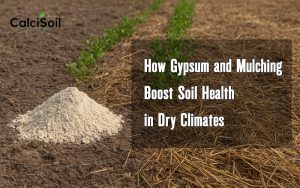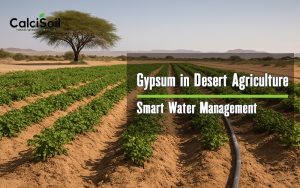
Why Measuring Gypsum Effectiveness Is Essential for Farmers
Applying agricultural gypsum can bring big benefits to soil health, but how do you know it’s actually working? For many farmers, gypsum fertilizer is an investment meant to improve structure, supply calcium and sulfur, and reduce nutrient runoff. Without measuring gypsum effectiveness, you’re essentially guessing. By tracking the right indicators over time, you can confirm whether gypsum is helping your field reach its full potential — and ensure you’re getting a good return on your investment.
Start with a Baseline Soil Test Before Application
Before spreading gypsum across your field, you need a clear starting point. A comprehensive soil test will reveal existing nutrient levels, pH, and physical properties like compaction. Pay special attention to calcium and sulfur concentrations, as these are directly influenced by gypsum fertilizer. Record this data, along with any visible issues such as poor drainage, crusting, or stunted plant growth, so you have something to compare against later.
Observe Visible Changes in Soil Structure Over Time

One of the quickest signs that agricultural gypsum is working is improvement in soil texture. Well-treated soils become more crumbly and less compacted, allowing roots to penetrate deeper. You may also notice better water infiltration after heavy rains — puddles disappear faster, and the soil surface dries evenly. Farmers often see these changes within a season or two, especially in clay-heavy soils. Keep photographic records from the same spots each year to make comparisons more reliable.
Monitor Crop Growth and Yield Improvements
Gypsum doesn’t act like a quick-release fertilizer, but its benefits show up in crop health over time. Watch for stronger root systems, improved plant vigor, and more even growth across the field. In certain crops like alfalfa or corn, better nutrient uptake translates into higher yields and better quality. Tracking yield data year after year — ideally alongside your gypsum application records — will help confirm if the amendment is delivering results.
Check Water Quality and Nutrient Runoff Levels
One of gypsum’s most valuable benefits is reducing phosphorus runoff, which helps protect local waterways. If your farm has drainage tiles or runoff collection points, periodic water testing can show changes in nutrient levels over time. Lower phosphorus concentrations after gypsum application suggest the amendment is doing its job in keeping nutrients where they belong — in the soil and available to crops.
Use Penetrometer Tests to Measure Soil Compaction Reduction
Compacted soils can severely limit root development and water movement. A simple penetrometer test before and after gypsum applications can reveal whether your soil is loosening up. Lower resistance readings mean roots can grow deeper, which generally improves drought tolerance and nutrient uptake. This is a measurable, objective way to track gypsum’s physical benefits.
Evaluate Long-Term Soil Health Indicators
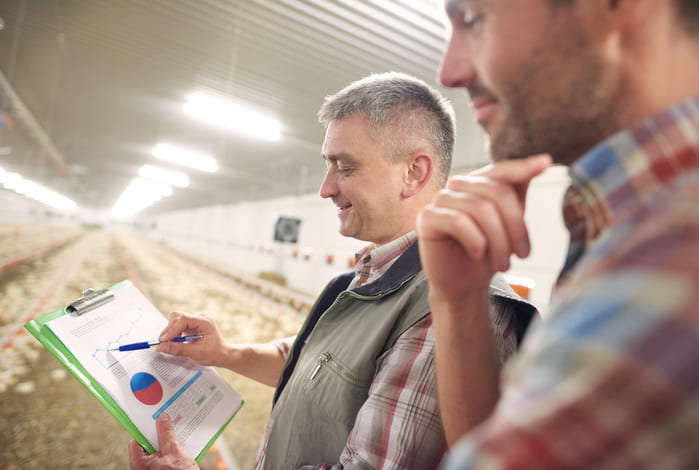
Gypsum works best as part of a long-term soil management plan. Over multiple seasons, watch for gradual improvements in cation exchange capacity (CEC), organic matter content, and pH stability. While gypsum itself doesn’t change pH dramatically, better root growth and nutrient cycling can make your soil ecosystem more resilient. Annual or biennial soil tests are key to seeing these trends.
Compare Economic Returns with Costs
Ultimately, the value of gypsum is tied to its return on investment. Compare costs of application with benefits like yield increases, reduced fertilizer losses, and improved water management. For some farms, gypsum pays for itself within two to three years through higher productivity and lower input costs. Keeping clear financial records will help you decide whether to maintain, increase, or reduce future applications.
Conclusion: Data-Driven Gypsum Use for Sustainable Farming
Measuring the gypsum effectiveness on your field isn’t complicated — but it does require consistency. By starting with a baseline, monitoring physical and biological changes, and analyzing both agronomic and economic outcomes, you can make informed decisions about how to use gypsum fertilizer most effectively. Over time, this approach ensures you’re not just adding inputs, but building a healthier, more productive, and more sustainable farm.
Discover our Agricultural Gypsum for improving your farm soil and crops!

